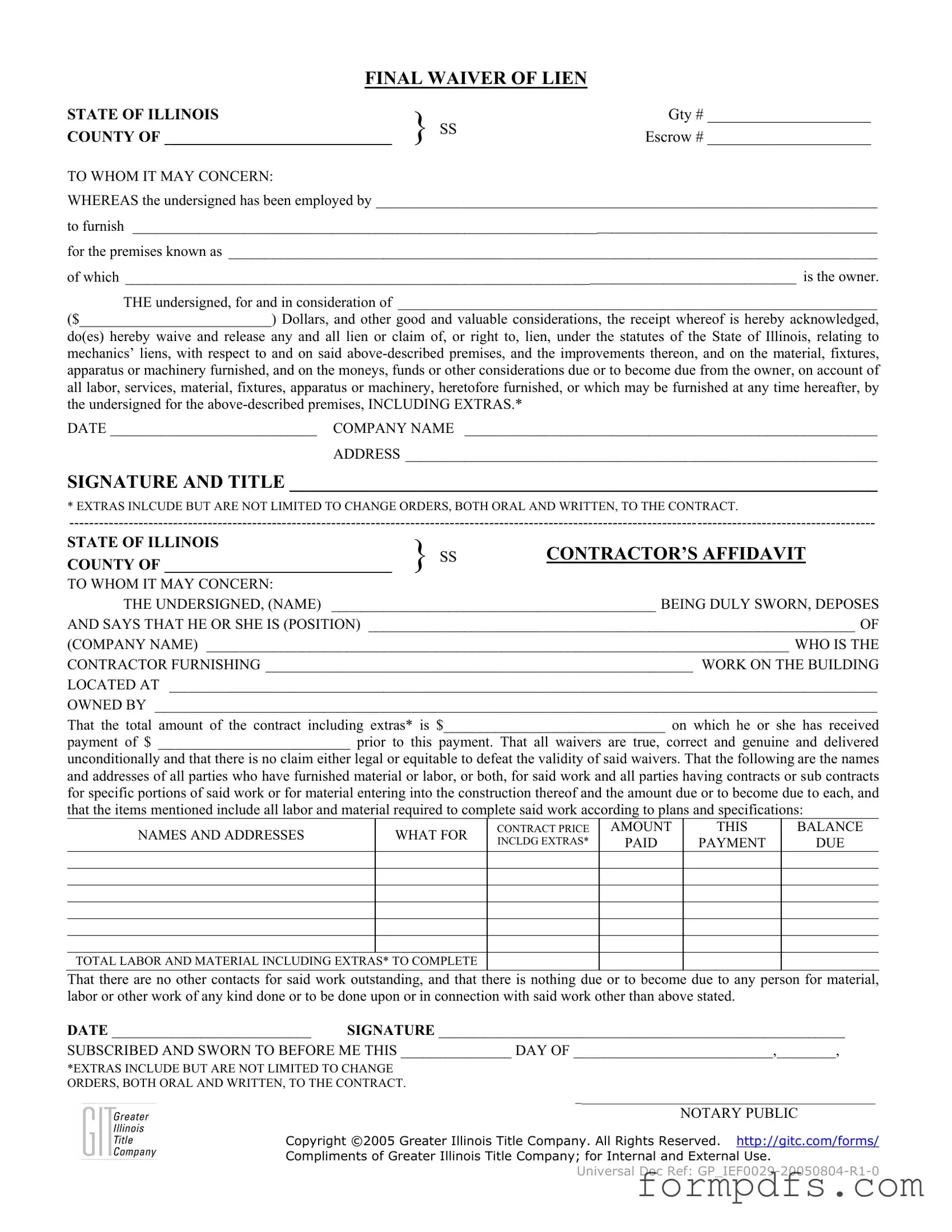What is the purpose of the Illinois Final Waiver Of Lien form?
The Illinois Final Waiver Of Lien form serves as a formal declaration by a contractor or subcontractor indicating that they have received full payment for their services or materials provided on a construction project. By signing this document, the individual waives any future claims or liens against the property in question. This is particularly important in the construction industry, where disputes over payments can lead to legal complications. The form ensures that the property owner is protected from any further claims related to unpaid work once payment has been made.
Who needs to complete the Illinois Final Waiver Of Lien form?
This form must be completed by contractors, subcontractors, or suppliers who have provided labor, services, or materials for a construction project. It is typically used at the end of a project, once all payments have been settled. The party completing the form must ensure that they have received payment in full before waiving their right to file a lien. This includes any extras that may have been agreed upon during the project, such as change orders. Proper completion of the form is essential to avoid any future claims against the property.
What information is required on the Illinois Final Waiver Of Lien form?
The form requires several key pieces of information. First, it asks for the name of the contractor or subcontractor, along with their company name and address. Additionally, the description of the work performed and the location of the project must be included. The amount received for the services provided is also necessary, along with a declaration that all waivers are true and correct. Lastly, the form must be signed by the individual completing it, and notarization is required to validate the document legally.
Is the Illinois Final Waiver Of Lien form legally binding?
Yes, the Illinois Final Waiver Of Lien form is a legally binding document once it has been properly completed and signed. By signing the form, the contractor or subcontractor relinquishes their right to file a lien against the property for the specified work. This means that if any disputes arise regarding payment after the waiver has been signed, the individual cannot pursue a lien claim. It is crucial for parties involved in construction projects to understand the implications of this waiver and ensure that all conditions are met before signing.
